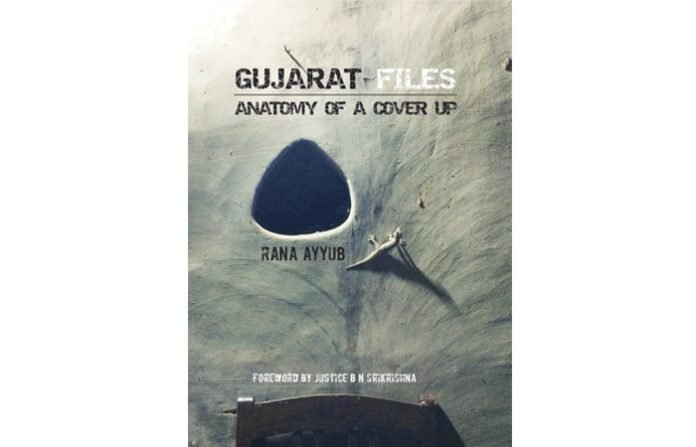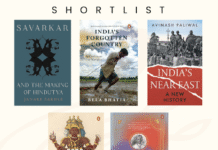
Rana Ayyub’s self-published book, Gujarat Files: Anatomy of a Cover Up, was launched in May 2016 at New Delhi’s India Habitat Centre in the presence of a small crowd. A handful of media personalities were also there, minus their camera persons. There was Saba Naqvi and her uncle Jawed Naqvi, TV journalists Shekhar Gupta, Barkha Dutt, Jyoti Malhotra, Sankarshan Thakur of The Telegraph, Seema Chisti of The Indian Express, Girish Nikam of Rajya Sabha TV, Abhinandan Sekhri of News Laundry and Ellen Barry of the New York Times. Writers Arundhati Roy, Raghu Karnad, Shudhabrata Sengupt and academic Zoya Hasan were among those who attended the event.
All had come to hear the investigative journalist speak about how she went about doing a sting to unveil the ruling dispensation’s modus operandi of using local BJP politicians and their affiliates like the VHP to neutralize the state machinery, during the 2002 communal riots and a series of fake encounters that followed. Senior lawyer Indira Jaisingh and India Today TV consultant editor Rajdeep Sardesai were the speakers who were a part of the conversation hosted by Caravan’s political editor Hartosh Singh Bal.
It was supposedly a muchanticipated event, or so it seemed when one considers the near absence of the media. Why were they reluctant to cover this event? Many news outlets usually send their camera-persons and TV crews to cover events of this nature that are controversial. While some events are covered in the broadcasts, most find their way to the library. But here, the near absence of any coverage by the media makes one wonder whether they wanted to be seen as covering it at all! A fine example of self-censorship? The Indian Express was perhaps the only newspaper which reported the event. The daily tried to get comments from the BJP spokesperson, but got stonewalled.
The biggest surprise was that Tehelka, the publication reputed for numerous sting operations, baulked at carrying this one despite sending Ayyub to Gujarat on such a hazardous mission in the first place. Then, when Ayyub turned her transcripts into a book manuscript, a succession of publishers apparently backed out from publishing it – forcing her to eventually self-publish it. The book sold out its first print in just a couple of days and since reprinting, it had reached Amazon’s top twenty bestseller list before settling further down but continues to be a bestseller.
Is this about growing selfcensorship in India? This is not the first time when a book was forced to be self-published. There were a couple of similar instances in the past. Jitender Bhargava’s book The Descent of Air India, which was withdrawn by Bloomsbury India, is one of several instances where litigants have been able to get global publishers to withdraw books merely by issuing legal notices and without even waiting for a court order. Although the printed book was withdrawn by Bloomsbury after the former civil aviation minister Praful Patel sent it a legal notice, the author self-published it as an eBook on the Amazon Kindle platform.
Another book, considered controversial by well-known global publishers and subsequently self-published, is Paranjoy Guha Thakurta’s Gas Wars — Crony Capitalism and the Ambanis. Selfpublishing does not bring immunity from litigation and Gas Wars also received legal notices but the intrepid author has continued to distribute the book which is selling well both in print as well as an eBook. A well-known economic journalist, Thakurta invested in a self-publishing package provided by Authors Upfront, a company that has helped him with several aspects of publishing and promotion including his own website www.gaswars.in.

















